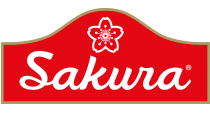14 maio Your guide to accounting for manufacturing businesses
Next, the assembled table is sent to varnishing, whereupon the required amount of varnish also becomes part of WIP, along with the now assembled table. The value of the WIP inventory consists of the values of raw materials, labor, and manufacturing overhead costs accrued within manufacturing it until the table is finished https://www.bookstime.com/ and ready for shipment. It’s like a detailed grocery list (bill of materials) and a careful budget (job costing), ensuring the total cost doesn’t eat into profits. Overall, accounting for manufacturing costs requires a specialized understanding of the unique aspects and complexities of the manufacturing industry.

Choosing the Right Manufacturing Accounting Software
A piece of inventory becomes labeled as work-in-progress when raw material combines with human labor. When the product is finalized, it switches from WIP to being categorized as a finished product. Finally, when the product is sold, it moves from a form of inventor to cost of goods sold (COGS) on the balance sheet. The terms work-in-progress and finished goods are relative terms made in reference to the specific company accounting for its inventory. It’s incorrect to assume that finished goods for one company would also be classified as finished goods for another company. For example, sheet plywood may be a finished good for a lumber mill because it’s ready for sale, but that same plywood is considered raw material for an industrial cabinet manufacturer.
Optimizing Production Cost Management
Thus, your ending WIP inventory is essential to know for inventory accounting. Professional accounting services can completely transform the manufacturing process and save you money on production costs while increasing profit. Further, for smaller manufacturers that aren’t equipped to have full-time accounting staff in-house, partnering with the right accounting service will make a world of difference.
Activity-based costing
- To differentiate between different financial periods, the WIP inventory value for the current period is sometimes also called the ending work-in-process inventory.
- Additionally, manufacturers have the option of hiring more knowledgeable and qualified operators.
- Variable costs change depending on the number of units your manufacturing firm produces.
- Employing job costing enables businesses to assign costs to each production run or batch of products, facilitating a comprehensive tracking of expenditures specific to each job.
- The object and subsidiary accounts define the kind of transaction you are working with (for example, rent, paper supplies, and so on).
As a result, it’s worth investing in developing a deeper understanding of the related accounting and tax rules. If nothing else, it’ll help you analyze your financial statements and reports to improve the efficiency of your business. Tracking the status of in-process goods and work orders is crucial to ensure efficient production processes and optimal stock levels. Doing this with spreadsheets or pen-and-paper is possible for very small or simple operations. However, a much more comprehensive solution for companies of any size lies in manufacturing software.

WIP is calculated as a sum of WIP inventory, total direct labor costs, and allocated overhead costs. WIP accounting also does not include costs for finished items, which are classified as finished goods inventory after they have moved past the production floor. Total manufacturing cost represents the total costs of all manufacturing activities for a financial period. It is calculated as the sum of the total costs of raw materials, labor, and overheads used in manufacturing for the period.

5.2 Object and Subsidiary Accounts
There is generally no question of the purchase or sale of work-in-process.
Saving Time and Selecting the Appropriate Operator
By employing appropriate accounting practices, businesses can accurately track costs, make informed decisions, and effectively manage their financial performance. The costs of all these products, the labor put into them, and the manufacturing overheads linked with them are now the assets for current inventory on your balance sheet. The finished goods account and, eventually, your cost of goods sold (COGS) are then added to them. The products in a manufacturer’s inventory that are completed and are awaiting to be sold. You might view this account as containing the cost of the products in the finished goods warehouse.
- If you can’t keep track of every item in your inventory because the units are interchangeable, you must assume which ones you sell first.
- This can be a bit time-consuming, so it’s typically best to tally it up at the end of your accounting period to minimize uncertainty on your company’s balance sheet.
- Its raw materials consist of an assortment of electronic circuits, cathode ray tubes, displays, and packaging materials.
- However, if you’re aware of when your high and low seasons are starting, you can set the right reorder points for your inventory and keep going lean.
In those situations, we use job costing to assign individual costs to projects. Then you find that you have invested $225,000 in production costs for the quarter, and the total value of your finished goods manufacturing accounting is $215,000. Since WIP inventory takes up space and can’t be sold for a profit, it’s generally a best practice for product-based businesses to minimize the amount of WIP inventory they have on hand.
- Accurate, in-the-moment inventory counts enable more precise forecasting, which makes it easier to communicate with vendors and freight forwarders in a more efficient manner.
- It is a practice first initiated by Toyota but has influenced manufacturing for decades, particularly the automobile industry.
- When these terms are used by businesses selling a physical product, both mean the same thing.
- Once the product has moved past WIP, it is classified as a finished goods inventory.
- Work in process is goods in production that have not yet been completed.
- COGM can be determined by adding the total manufacturing costs to the beginning WIP inventory, followed by subtracting the ending WIP inventory.
In process manufacturing, such as food and beverage or chemicals, the bill of materials is known as a production recipe. In manufacturing, fixed costs remain consistent no matter how many units you produce. For example, that might include rent for your factory or interest payments on a business loan. This approach is primarily beneficial for manufacturers who produce a relatively low number of unique products. For example, a manufacturer of made-to-order furniture would likely employ job costing.
- Manufacturing accounting systems offer valuable visibility into key aspects of inventory management, encompassing goods acquisition, stock valuation, and the calculation of moving average costs (MAC).
- To clarify where WIP inventory falls in the production process, let’s look at it in the larger context of other inventory classifications.
- However, if your procurement process looks anything like the following three scenarios, you should be tracking and calculating your WIP inventory.
- These articles and related content is not a substitute for the guidance of a lawyer (and especially for questions related to GDPR), tax, or compliance professional.
- When the cost of goods sold is subtracted from net sales, the result is the company’s gross profit.
- Because that directly affects your tax liability, the IRS requires that you use specific methods to calculate both numbers.


No Comments